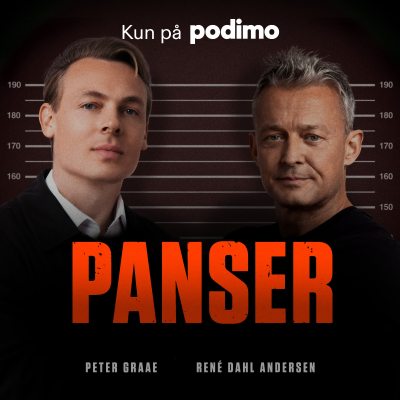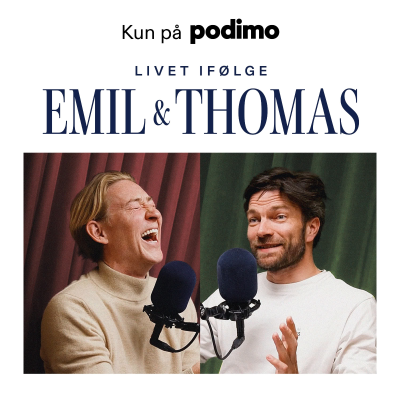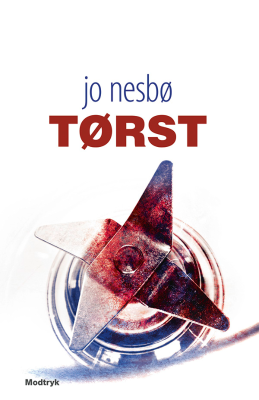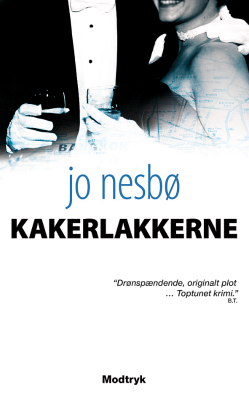
Podcast Maps by Graham Brown
engelsk
Business
Begrænset tilbud
3 måneder kun 9 kr.
Derefter 99 kr. / månedIngen binding.
- 20 lydbogstimer pr. måned
- Podcasts kun på Podimo
- Gratis podcasts
Læs mere Podcast Maps by Graham Brown
Podcast Maps by Graham Brown is your map to navigate through the increasingly competitive world of podcasting. According to latest data, there are 1 billion million people listening to Podcasts every week. The competition is getting fierce. Doing what you did last year won't work anymore. You need a guide. These are the topics I cover in Podcast Maps 1) Podcast Analytics 2) Podcast Market Data & Penetration 3) Podcast SEO 4) Podcast Rankings 5) Podcast Audience Numbers 6) Podcast Audience Growth Strategies 7) Social Audio 8) Audio 2.0 9) The impact of Artificial Intelligence on Audio 10) Podcast Guesting and Thought Leadership Useful Resources: Podcast Maps Podcast Guesting Pro Podcast Accelerator Pikkal & Co - Podcast Agency About Graham Brown
Alle episoder
37 episoderPodcast Maps EP 37 - Audio Trends: Instagram, Facebook, TikTok, Spotify, Curio and Podcast Rankings
Welcome to podcast Maps. My name is Graham brown. I'm going to share with you five insights from the world of audio, very different insights from tech, business and society. This week, we're going to look at what Instagram is doing in audio and what that means to Facebook, Tik Tok and Spotify. Then we're going to look at podcast rankings and data analytics. I'll offer some insight into three rankings apps that are available on the market right now being Chartable, Rephonic and Podstatus. Then we're going to look at an app that I've started using recently, which isn't actually a podcast app, but it is audio journalism. It's called Curio. I'm a big fan, I'm now a subscriber of the app and I think you should check it out at least to see what's possible in audio. We will then finish up with two disruptive trends. The first one is Neil Patel, the SEO guru, moving from guest posting which he has been using as the cornerstone of his SEO content marketing and thought leadership strategy for so long and now doubling down on podcast guests. Lastly, we'll look at the podcast $150 billion opportunity. Everybody talks about podcasts in terms of advertising. But i feel that there's a large untapped and overseen opportunity in podcasts. All this and a lot more coming up in this week's episodes or podcast maps. Enjoy the show.
Podcast Maps EP 36 - Getting Started with Your Corporate Podcast
How do you get started with your corporate podcast? Well, you have a choice to do it in-house or to do it with a specialist. In-house maybe easiest to get started in the short term if you have the ready skills. But the lack of industry wide perspective on what works as well as the risk and cost and employee times and focus may make it a better choice for you to hire an industry specialist, a podcast agency, like our team at Pikkal & Co, who have the industry experience and can take care of all the heavy lifting. So are you ready to get started? Well, there are three questions to help you answer that question. One, do you have an idea of the business benefit and the why of the podcast for your team and your organization? Two. Who is the host going to be? You may not have a definitive answer, but at least a shortlist. If you don't even have a shortlist, it may be worth spending some time talking to people inside the organization to find out who would make a suitable host, and also who would be interested in doing it. And lastly, do you have the bandwidth to do this long term? Everything important in business exists in the long term, beyond the next quarter. I'm talking about thought leadership, brand building, relationships and it's no different from podcasts, which includes all of the above. So, if you feel confident of your answers to these three questions, your next step should be identifying the stakeholders for your potential podcast. Project favoring, an optimal working team rather than the perfect one. You may not have all your ducks lined up for this particular project, but you at least have a starting point and that's where we come in and help you take this project to the next step. I'll be happy to give you advice on your podcast project, whether it's an idea or an established podcast. One way to do that is to go to our website at Podcasting For Brands [https://www.podcastingforbrands.com]. Or you can simply email me at gb@pikkal.com.
Podcast Maps EP 35 - Who Should Host Your Company Podcast?
With over a thousand podcast episodes produced, you develop a good ear for what makes a good host and importantly, what doesn't. I'll talk about those choices in a minute. But at this stage, the most important decision is to decide who the host is. We have a series of criteria in the podcast agency to identify hosts internally and help corporate leaders and comms leaders decide who the best hosts could be. Here are a couple of those questions and factors to consider in host choice one. Are they a podcast listener themselves? Do they already consume podcast? Being an existing listener is a key factor in determining long-term project success. If I was to look at one of the most important factors in determining whether a podcast is going to get beyond episode six is whether or not the existing host is already actively listening to podcasts. They have to be a believer. An existing podcast listener is more likely to be motivated for this podcast. They'll have an ear for what sounds good and what doesn't, and they're more likely to come up with ideas for the continuing podcast. An existing podcast listener is more likely to be vested in this podcast success. Of the five factors that we help podcast clients use to determine good host podcast fit. The last factor is authenticity. Will this podcast host open up, will they appear human and communicate in an authentic way?
Podcast Maps EP 34 - How to develop a cohesive podcast narrative for your brand
Sometime ago, I was giving a presentation to a group of startup founders, and I was talking about narratives and storytelling. After the presentation, one of the startup founders approached me. He looked a little bit confused and he said, "I don't want to tell a story. I want to tell the truth." To which I replied, "If you don't tell a story I won't know what your truth is." In a world where people increasingly want to know our truth, who want to see through organizations and understand the thoughts and the conversations of the people inside them, knowing how to create engaging narratives is becoming more important than ever. The most engaging narratives are not found in PowerPoint and bullet points. So, what is a narrative? A narrative is a story. It's a series of connected events. That's why all stories whether it's in Netflix or in a book are told in chapters in episodes. Think about a book. Why did you pick that book up in the bookstore? Well, you look at the cover. You turn it over and look at the back, the blurb as they call it in the industry. That blurb is super important. It defines the reason why you're going to pick that book up and read it. So in the bookstore, you open the book and you start reading a few pages. This process is no different from how people consume podcasts today. They find a podcast on Apple podcast or Spotify. They listen to it and then if you're lucky they subscribe. Now, if you go back to the Gutenberg Printing Press. The book publishing industry is over 500 years old. However podcasting is young and new, and that means they haven't quite learned by trial and error. What works and what doesn't yet. Although in the last couple of years, podcasting models have evolved fast. The most successful podcast today have learnt the best of what works from the world of Netflix, book publishing and music and right at the top of that list of things that work in the world of publishing is narrative. Remember that last book that you picked up and read or that Netflix documentary you watched, how did it present the content? Was it dry fact and bullet points or was it a journey? Now content can come in both forms but I bet the journey is the one that's going to keep you coming back and turning the pages. Think about how Malcolm Gladwell or Seth Godin reads compared to let's say your average white paper and even in the beginning of this section, I gave you a small human story. Remember the startup founder that came to me after the presentation. It was an anecdote, an apocryphal tale. But we've been doing this as a species for thousands of years. To convey meaning to lead audiences and to create positive change. If you want to grow your audience today as a podcast, you must have a good content narrative. In the context of a book or watching a Netflix episode, it's the reason why I'm going to stick around and consume the next episode. Podcast designed without a good narrative may succeed in getting an audience to one specific episode, but fail to convert that audience into subscribers over repeat listeners. And the reason is, is that episode one has nothing to do with episode two and episode three. There's only so much of your time, per audience's attention that you can take for granted these days. You can build a compelling narrative for a corporate brand. McKinsey's Future of Asia podcasts, for example, has a strong through story. The core theme is the future of Asia, as it says on the podcast itself. Within that the macro trends of the Asian century from the rise of Asians middle classes to the evolution of its dynamic startup ecosystems. A good narrative should also lead a category. In marketing terms, this is simply called a category narrative. Sometimes it's called a strategic narrative. Think of how red bull, for example, rather than playing in this soda category decided to define the category of energy drinks. Think of how salesforce.com [https://www.salesforce.com]. defined and ultimately led its category with its no software narrative. I'm pleased to be working with UTI, an India investment bank, which wants to define its category narrative. The podcast we're creating with UTI is the story of India and a key objective for UTI is to redefine that story, to tell it in a positive way to show clients and partners about the outsize returns potential in India. This isn't a story of Bollywood and Curry, but a story of entrepreneurship of the world's largest youth population embracing the future and a digital first, digitally enabled, talent pool. Great storytellers know how to tell stories. It's a skill. It can be learned and it's one of the things that we work with our clients on. One of the things we've learned as an agency over the years is a good ear for understanding how to take an idea and turn it into an engaging story. That doesn't mean fabrication of fact, but it means delivering content fact and information in a meaningful and engaging way. Think of, for example, the effectiveness of creating change with a story like flattening the curve. That's a story. It's not once upon a time, but like all stories, it involves change. Think of the different results that we would have achieved in public health care policy if flattening the curve was presented as a PowerPoint presentation.
Podcast Maps EP 33 - What do you talk about on a branded podcast?
So, what do you talk about on your brand podcast? The answer to this question lies in your audience. That's why, if you haven't defined the Audience Avatar for your podcast yet, it's going to be hard for you to create content that strikes a chord with the listener. The good news is that you probably have a lot of content already in the house. That may be white papers and reports, but it also may be found in the conversations that your people have on a day-to-day basis. That's why, there are four different sources for content for your podcast, the host, your internal body of work your guests and your audience. Good podcasts include at least three of these four in their programming. And the choice of three is really dependent on the podcast design. When you've chosen the right design for your podcast, content choices fall into place. That's why one of the most important sessions that we hold with podcast clients is what we call the Content Mapping session. That takes the design that we've worked on together in stage one and manifest that as a content calendar in stage two. Content should always be based around the needs of the audience. Often one of the starting points for a podcast idea is this is what I want to talk about. Our goal as a podcast agency is to bring that starting point to the next level which is what does the audience want to hear about and that really is about what's her issue, what's her frustration, what problem are we solving for her and why will she listen. These are key questions that we must help answer in the pre launch stage of a business podcast. Once you have the design, you can then think about the Audience Avatar. And once you have the Audience Avatar, then you can go to work on the content choices. For example, I want my podcast to get me meetings and leads. I'm a startup and I see myself as a leader within this space. Once you choose the news and analysis podcast. The next stage is the definition of the Audience Avatar and then defining the content. So my Audience Avatar are comms leaders, corporate leaders out there, people who are frustrated with the pandemic and being unable to get their key talking points out to the market in ways like they used to. They are frustrated and overwhelmed by content choices everywhere. Do I choose video, do I choose TikTok or do I choose audio? They look at me because I've created a map for them to navigate this increasingly complex industry and make more informed choices. So with this podcast design combined with an Audience Avatar, my challenge now is to put together the content plan. And this comes back to the four content sources for your podcast. Now it varies by podcast design. But as a general role here are some of the ideas for podcast content. For the host, focus on personal journeys and connection with the subject. I recorded my first podcast in 2006, I set up a podcast agency 2018. Let's look at existing body of work form the key talking points for the brand. In my case, I have white papers and guides. You can go to pikkal.com/guides [https://www.pikkal.com/guides] and download all of them free. And then this guide, this audio book you're listening to now, I created it for you. It's your questions that you've been asking me over all these years. That's why audience are crucial part of your content. As a host, you must speak to their pain, their frustrations. You must know who they are and also the language that they use to talk about these important issues. For me, for this guide, you are a comms leader, a corporate leader or somebody that services all of the above. I didn't write this guide for podcasters. Although you may be a podcaster and the corporate leader already. So the questions that I've answered in this guide, aren't podcaster questions. No, there are plenty of podcaster guides out there about how to use microphones, etc. Instead this guide is for you. And it's the questions that you have about corporate podcast, about creating a podcast for your brand and the goal is to help you make informed decisions about those questions and it's the same with your podcast. A key part of making your content and your conversation relevant to your listener is not only defining those conversations that matter to the listener but also defining what doesn't matter. When I work with the clients in defining the audience avatar and the design and the content map, one of the questions that we ask is not only who is this for, but who is this not for?
Vælg dit abonnement
Begrænset tilbud
Premium
20 timers lydbøger
Podcasts kun på Podimo
Gratis podcasts
Ingen binding
3 måneder kun 9 kr.
Derefter 99 kr. / måned
Premium Plus
100 timers lydbøger
Podcasts kun på Podimo
Gratis podcasts
Ingen binding
Prøv gratis i 7 dage
Derefter 129 kr. / måned
3 måneder kun 9 kr. Derefter 99 kr. / måned. Ingen binding.

































